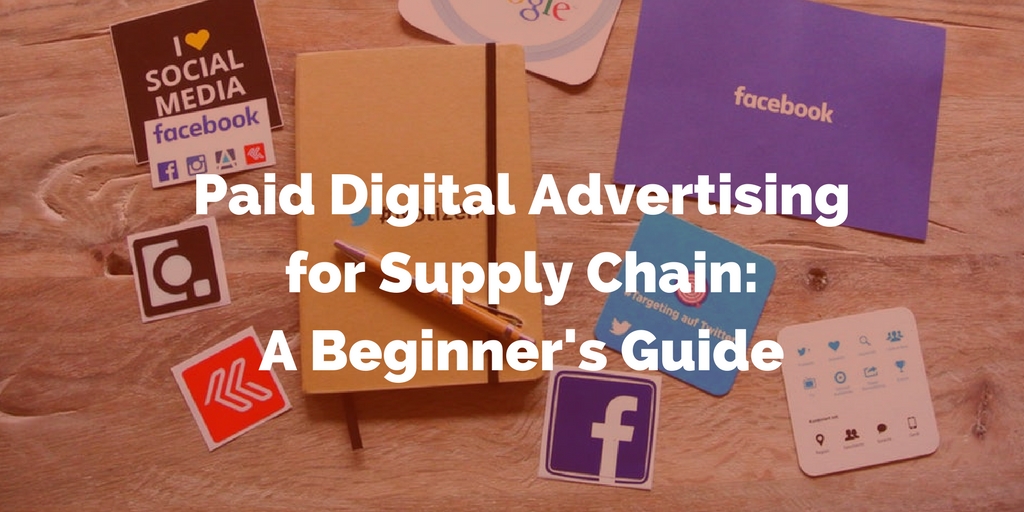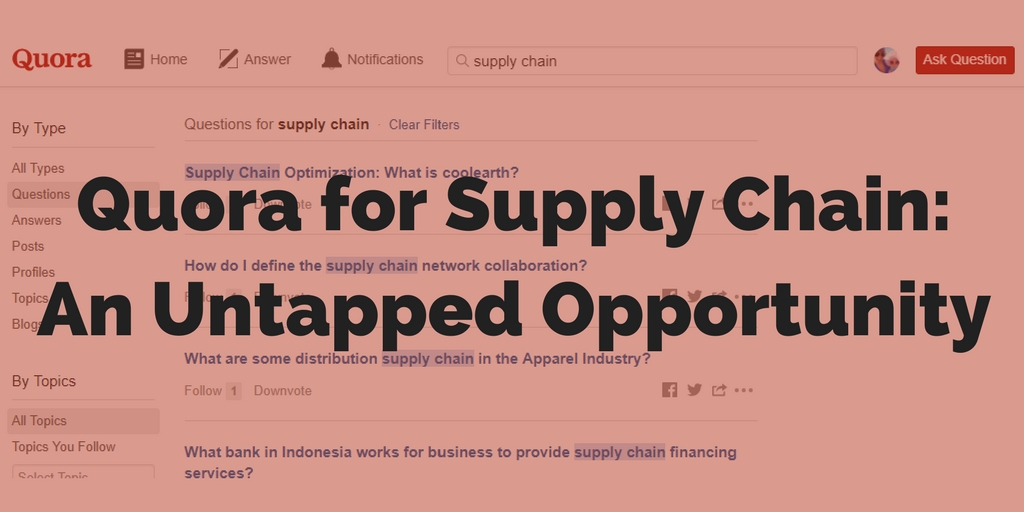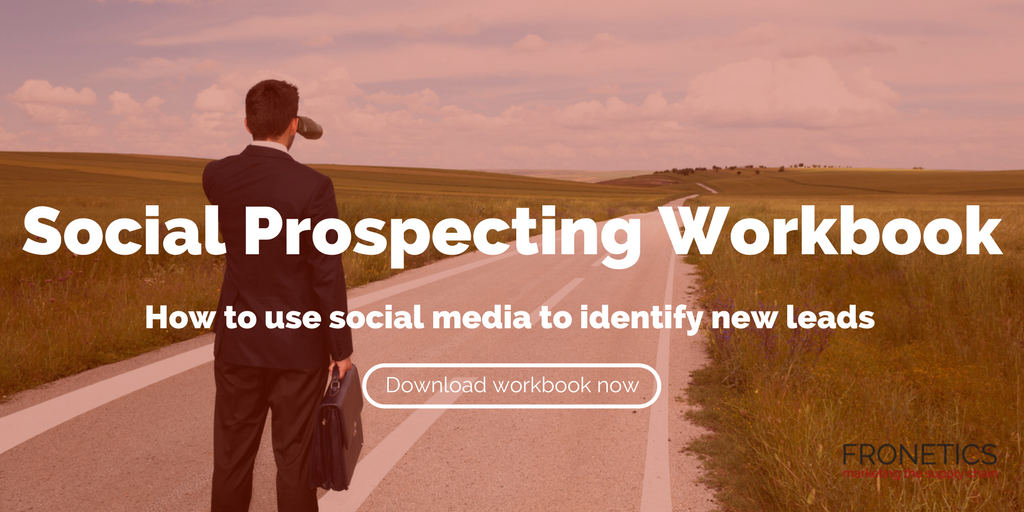
by Fronetics | Oct 4, 2017 | Blog, Content Marketing, Marketing, Social Media
Here’s a rundown of paid digital advertising options, including display ads, AdWords, and sponsored social media posts.
We are strong believers in content marketing. Build it, and they will come — or, in content marketing speak, publish quality content, and customers will come to you. But, as I often write about, content marketing takes time to bear fruit. There’s not much you can do about that.lick
Except paid digital advertising.
By investing in paid digital advertising, you can boost the reach of your posts, display ads and videos. Pair quality content with a comprehensive digital advertising strategy, and you will be in a position to drive more traffic, create more brand visibility, and close more deals.
Your peers understand this. Within the first quarter of 2017, Facebook, Instagram, Twitter, LinkedIn, Snapchat, and Pinterest saw a 61.5% increase in paid media spend. And that’s only going to increase through 2018.
So where do you start? Here are four ways to get started in using paid digital advertising to help take your content marketing strategy to the next level.
3 paid digital advertising platforms for beginners
Display ads
Display ads are the paid advertisements that appear in front of users on website pages in the form of graphics. Unlike text-based ads, display advertising relies on elements such as images, audio and video to communicate an advertising message. Display ads are commonly referred to as banner ads, but they don’t always take exact banner form. They can come in all shapes and sizes and can appear anywhere on a webpage.
Benefits: Because digital ads are visual, they can be customized with your logo, message, or even an offer to help increase brand awareness. You have the ability to use graphics, video, audio, and your company’s branding to really stand out and attract their attention. Display ads also allow users the ability to target a specific audience. You control which sites they appear on, which geographic area they appear in, and which demographic or niche market they appear to.
Sponsored social media posts
Social media is a natural place to begin if you’re looking to get into paid digital advertising. A good starting point is Facebook. The social media giant’s social ad revenue was more than $9.16 billion in Q2 2017 alone. And it doesn’t stop there. Twitter brought in $548 million in social media advertising revenue in the same period, and Snapchat is expected to reach over $895.5 million in ad revenue in 2017.
Benefits: Running paid social ads allows you to reach a large audience at a low cost. You pay based on the type of ad you’re running. For example if you’re looking to drive brand awareness, you’ll incur a CPM (Cost Per 1,000 Impressions). And not only are the ads relatively inexpensive to run, they’re not expensive to create. You get all of this plus the ability to target your specific audience, reaching people that are interested in learning about what you do.
Google AdWords
Google AdWords places your website as one of the top results on a search engine results page (SERP) when a user searches for certain keywords of your choice. When a user clicks the AdWords link or calls your business using that link, you incur a charge. Otherwise, impressions are free.
Google’s most recent update involves changes to the so-called “3-pack,” or the listing of three related local businesses on a search results page. Many consumers rely on the 3-pack to discover businesses in their area that offer the products and services they are seeking. And businesses get the benefit of many additional leads and customers when they appear in the 3-pack. This can be particularly significant for small businesses.
Benefits: The biggest benefit of Google AdWords is its speed. You appear in a top spot in a user’s search results, meaning you are one of the first things a user sees when searching for a specific product or service. That’s another good point: Google AdWords allows you to focus on people who are searching for what you have to offer, so you don’t pay for a bunch of wasted impressions. AdWords also gives you real-time reports to track your ad’s success. A dashboard shows information related to each campaign, such as the ads clicked, keywords entered by website visitors, cost of clicks and much more.
Related posts:

by Fronetics | Oct 3, 2017 | Blog, Content Marketing, Marketing, Social Media, Strategy
Learn how a mobile advertising network and an inbound marketing agency tried Quora as a marketing tool.
Last month, I gave you some tips on how supply chain and logistics marketers can use Quora to build their brands. If you’ve forgotten why you should be incorporating Quora into your marketing strategy, here’s a quick recap:
- Research: Quora offers amazing insight into what thought leaders in the supply chain and logistics industries are focused on. Just by tuning into the conversation, you can gain extremely valuable knowledge.
- Connections: This social media platform gives you a perfect space to connect with peers in your industry and with potential buyers, as well.
- Reputation building: Quora is one of the best tools out there for reputation building. It allows you to participate in and contribute to conversations that can shape the future of your industry. Using this platform effectively gives you the opportunity to become a resource for others in your industry and for your target buyers — and there’s no better reputation builder than that.
Plenty of business are already using Quora extremely effectively, seeing ROI and more. But supply chain and logistics companies have yet to jump on this untapped opportunity. Let’s take a look at a few success stories.
2 B2B companies successfully using Quora
Kiip
This mobile advertising network has a unique business model that “redefines how brands connect with consumers.” Back in 2014, the marketing team did a series of experiments — one of which was answering questions on Quora — to figure out which growth strategies would be most beneficial for the business model. Read about Kiip’s Quora experiment here.
Kevin Fishner, Kiip’s director of growth, said that his goal in answering Quora questions was to “build our brand presence in the mobile advertising space while driving quality leads to our site.” He offers the important insight that there is a fine line between offering valuable answers and blatantly pitching your product.
“If the question directly pertained to Kiip,” Fishner says, “I’d drop a link at the bottom of my answer. If it was a more generic mobile advertising question, I’d use insights from our campaigns at Kiip and leave it at that.”
Fishner points out that answering questions thoughtfully takes a significant time investment. But in the end, this investment is worth it for your business in all kinds of ways.
As you join the Quora conversation, keep Fishner’s insights in mind. Promoting your brand isn’t always about pitching your product. Becoming a thought leader can be just beneficial, if not more so, for your brand and, ultimately, for your bottom line.
IMPACT
Impact is an inbound marketing agency based out of Connecticut. Earlier this year, IMPACT blogger Carolyn Edgecomb wrote about how the company used Quora marketing to build brand awareness. Like Fishner, she points to following core advice for using this platform: “Hustling or selling is exactly what you shouldn’t be doing on Quora. Instead, aim to spread knowledge.”
Based on IMPACT’s experience on the site, she suggest that “by regularly engaging with other members, you’re able to gain key insights from leading experts, target your audience, and even repurpose your content while answering and asking questions.”
For IMPACT, Quora was less about generating ROI and more about “increasing brand awareness and establishing thought leadership.”
Supply chain and logistics companies can take inspiration and insight from these two Quora marketing success stories. The field is largely open. Start looking for questions you can answer, become a part of the conversation, and aim to become a thought leader.
Related posts:


by Fronetics | Sep 25, 2017 | Blog, Content Marketing, Marketing, Social Media, Strategy
Use the first months to lay a solid foundation for your content marketing program so it can begin generating leads and sales.
So you decided it was time to jump into the content marketing game. You’ve been crafting the perfect content. You’re posting on a regular basis. You’ve identified your target audience and have been researching keywords. You’ve even learned a thing or two about SEO.
But you have no leads or sales to speak of. And your boss is breathing down your neck for results, FAST. Is it time to throw in the towel? Absolutely not!
Content marketing is a long-term solution that helps businesses build brand awareness, grow their audience, and generate new leads and sales. But, like any good relationship, it takes time and effort to achieve results. You shouldn’t give up before the seeds you sow have time to bear fruit.
To understand the time table for content marketing, let’s look at some markers for the first six months.
Month one
Learn about your target audience and understand their needs.
In order to get the ball rolling in content marketing, you have to understand who you are trying to reach. It’s important to think holistically when considering who you are trying to reach at a potential prospects’ company. Typically, your target audience falls into two categories: Primary (decision makers) and Secondary (influencers of the decision maker). Going one step further, you need to identify your target audience’s needs and pain points so that you can direct your content marketing strategy at creating awareness around those needs.
Document a content marketing strategy.
You would never operate your business without 1) creating a strategy, 2) documenting it, and 3) following the strategy. A content marketing strategy outlines the methods by which you will target, reach, and engage your audience. Research and execution of these tasks can be quite complex. Writing out a plan and assigning appropriate resources can offer clarity and guidance to your organization throughout the course of your program.
Month three
Create and publish content.
93% of B2B marketers use content marketing. However, less than half (42%) of B2B marketers say that they are effective at content marketing. One of the reasons these marketers are ineffective: bad content.
When you are creating and curating content for your business, focus on original content that stands out to current and prospective customers. Valuable and relevant content is not a sales pitch. Rather, it is content that communicates valuable information to customers and prospects so that they have the knowledge to make more informed decisions. Moreover, it is content that establishes your business as a reliable source of knowledge — as the thought leader within the industry.
Promote content on multiple channels.
Understanding your target audience and which social media platforms they’re using is invaluable information. If you want to reach potential and current customers, you need to be where they are. You need to make it easy for them to find you and to engage with your business. And if your competitors are already active on social media, start by finding out where. If these platforms align with your ideal customer, don’t be afraid to kick start your social media presence alongside them.
Month six
Analyze your performance.
Track and analyze your metrics on a daily, weekly, monthly, and annual basis. Take a look at what is working and what is not. By tracking and analyzing your metrics you can see, for example, what type of content is most effective and which distribution channels are helping you achieve your goals. You’ll also be able to find opportunities for improvement. Look at the feedback you are getting through your engagement with customers and prospects, and make adjustments to your strategy as needed.
Expand your content creation.
If you’re focused on growing your business or creating awareness through the creation of engaging content, then you need to be ready to try new things. Have you been successful with blogging and Facebook posts? Then it’s time to try making videos and joining Twitter. And don’t be afraid to pull from other worthy sources. Content curation will serve to establish your business as a trusted resource and increase your brand visibility, all without over-promoting yourself.
Remember that when it comes to content marketing, it is important to think: marathon not sprint. An effective content strategy requires patience and determination. Many companies make the mistake of giving up on a content strategy too early. Give your relationship with content marketing time to play out, and don’t be afraid to adjust your strategy along the way if you find some things are working better than others.
Related posts:

by Fronetics | Sep 21, 2017 | Blog, Content Marketing, Logistics, Marketing, Social Media, Strategy, Supply Chain
Our resources for supply chain marketers include step-by-step DIY guides, industry reports, marketing templates, and case studies.
Here at Fronetics, we specialize in digital and content marketing for supply chain and logistics businesses. We understand the unique needs and challenges facing these companies, particularly when it comes to the consistent, strategic creation of content.
I try to provide regular tips, updates, and how-tos on this blog for those of you hoping to improve your marketing efforts. But sometimes our readers need a little more in-depth guidance. That’s why we have created a number of different resources for supply chain marketers.
Below, you’ll find a list and a summary of our 10 most popular resources. Included are step-by-step guides, industry reports, templates, case studies and more. These resources offer information on subjects from building a content strategy to creating better content to social media use among supply chain businesses.
I hope you enjoy! And, as always, if you don’t see what you’re looking for, please email me and let me know. I’m always seeking new ideas for content that will be helpful for supply chain marketers.
10 resources for supply chain marketers
Use these 10 resources to create a multi-channel content strategy that maximizes your digital reach. After all, a well-developed content strategy and social media presence will help prospects to find you, buyers to know you, and customers to trust you.
1) How the Logistics and Supply Chain Industries are Using Social Media
Fronetics conducted a survey of individuals within the logistics and supply chain industries. The objective of the survey was to gain insight into the use of social media within these industries. Specifically, to learn more about why companies within the logistics and supply chain industries are using social media, the benefits they have realized, and challenges they have encountered.

2) Social Media and the Logistics and Supply Chain Industries 2016
Companies within the supply chain and logistics industries have begun to recognize the value of social media — and are starting to reap the benefits. Both large and small businesses alike can profit from the use of social technologies as part of their marketing strategy, and they can reduce their marketing costs by doing so. This white paper defines social media and social technologies, identifies users and usage patterns, and describes some of the benefits that companies within the logistics and supply chain industries can realize through participation.

3) 3PL Cerasis Acquires 98 New Customers through Content Marketing
This case study looks at Cerasis, a leading freight logistics company. Despite realizing positive growth for 15 years, Cerasis was not attracting larger and more sophisticated shippers, brand awareness was low, and most importantly, they were not perceived as a leader within the industry. A content marketing strategy — inclusive of participation in social media and content creation, curation, and distribution — led to 14% increased revenue, 14% increase in lead-to-customer conversion rate, and over a 1000% increase in web and social traffic.

4) Monthly Marketing Reporting Template
Tracking and monitoring certain marketing metrics helps you quantify the progress of your marketing program. But you can also measure the ROI and make changes to your strategy to make it more effective. Use this report template to optimize your strategy, produce monthly reports, and create presentations.

5) Content Use in the Logistics and Supply Chain Industries
Content marketing has transformed the way businesses connect and share relevant information with their audiences. The publication and distribution of content is a strategy now widely used by supply chain companies to build trust and influence among peers, prospects and customers. Through a survey conducted on the use of content within the logistics and supply chain industries, this report offers broad insight into the overall role and influence of content.

6) Content Marketing Guide for the Logistics and Supply Chain Industries
Despite all its benefits, content marketing isn’t so easy. In fact, supply chain and logistics companies report that creating and executing an effective content marketing strategy is a top challenge for their businesses. In response, we developed this guide. It will help you create a strategy that will attract your target audience and drive profitable customer action.

7) Content Strategy Template
An effective content marketing strategy is one that is aligned with your company’s business goals and objectives. Furthermore, an effective content marketing strategy focuses on attracting and engaging prospects. All created, curated, and distributed content should target your ideal customer. Use this template to help develop and drive your content strategy.

8) On Writing Good Content: A Guide for the Logistics and Supply Chain
27 million pieces of content are shared every day. And most if it isn’t worth reading. To attract readers, your content must stand out. You must be strategic about how often you publish, where you distribute, and, most importantly, the quality of the content your produce. This guide will help you learn the basic principles of good content. It will also help identify content creators within your organization and brainstorm ideas for original and effective content.

9) Blog Editorial Calendar Template
This template is designed to keep you on track as you develop content that will attract and engage your prospects and customers. It will help you map out your content in a strategic manner, maximize productivity, and keep you organized. It includes weekly and monthly worksheets, as well as an ideas worksheet for tracking blog post ideas.

10) 12 Elements of an Effective Content Marketing Strategy
Content marketing is a strategic marketing approach focused on creating and distributing content to attract and retain a clearly defined audience. Interest in content marketing has climbed steadily since 2011, but a 2017 survey of 6,000+ global marketers found that 71% considered it their primary approach to marketing (76% in North America). This slideshow walks you through 12 elements of an effective strategy to achieve the best results for your business.


by Fronetics | Sep 19, 2017 | Blog, Content Marketing, Marketing, Strategy
B2B software company Text Request took 4 steps to grow organic traffic, a key component of any content marketing strategy.
We content marketers are always keeping an eye on organic traffic. It’s an indicator of success (though by no means the only one). Basically it lets you know how many of your website’s visitors found you by using a search engine. If you’re consistently publishing quality content that has value to your prospective customers, you should see a steady rise in organic traffic to your website.
But many B2B companies struggle with generating organic traffic to their websites. In fact, 61% of companies list generating traffic as their biggest marketing challenge in the 2017 State of Inbound Report. Over half (55%) list growing traffic to their website as a top priority in the next 12 months.
So how did Text Request, a B2B texting software company, grow organic traffic by 120% in 5 months? Marketing Director Kenneth Burke outlines the four simple steps the team took to drive this growth.
4 steps to growing organic traffic
1. Start with simple changes.
Text Request started with very basic steps to begin driving more traffic to its website. These changes included technical updates to their website, increased site speed, and a new content strategy. The updates to their website made the site more appealing to viewers, and the increased site speed led to a lower bounce rate. Of course, a documented content strategy should be a priority for any company hoping to grow its digital footprint.
2. Create 10x content.
The term ‘10x content’ was coined by Moz founder Rand Fishkin. Essentially, you create content that is ten times better than that which appears in the top search results for that subject. Sounds overwhelming. But think about it in terms of three specific audiences:
- Me: If you wouldn’t consider the content you’re creating valuable, then it most likely won’t add value for others.
- Targets: In order to add value and answer questions and/or inform prospects on a topic, understand what your target audience is lacking and fill that need.
- Competitors: By creating content that is better than the competition, you validate yourself as an industry leader.
3. Revamp existing content.
Content published months or even years ago doesn’t have to fade out. Updating older content gives these posts a renewed value. This is an important part of our content strategy here at Fronetics.
As part of his mission to increase organic traffic, Burke dug through older content to find posts he could revamp, updating as many as 60 posts in 5 months. That may seem like a lot. But, oftentimes, updating older content is easier than starting from scratch — especially if the topics are still relevant and just need updated statistics and research. By revising outdated material, Burke is “confident that they made a huge impact on our organic search traffic.”
4. Strive for backlinks.
Backlinks are incoming links to pages on your website from other websites. If the websites linking to your content are of high quality, search engines will start to consider your website more valuable — otherwise, why would these quality sites link to you? Thus, backlinks are an important component of a search engine optimization strategy.
Understanding their importance in driving organic traffic, Burke worked to improve the amount of backlinks to Text Request’s website. “From December to May, we grew our total number of backlinks by about 60%, which, in addition to driving referral traffic, boosted our standing with search engines.”
Most of the backlinks came from three specific places: HARO, guest posts, and earned links. Most important to earning backlinks was the research Text Request published in its content, which other companies found valuable — valuable enough to cite and link to in their content. These links were validation that the 10x content strategy was paying off for Text Request.
Results
With these four simple steps, Text Request saw a 120% growth in organic traffic to its website. The company more than doubled traffic in five months. More traffic = increased brand awareness = more prospective customers and leads = more sales.
While Burke was able to get pretty dramatic results very quickly, it’s important to note that improvements to your website’s search engine optimization do, most often, take some time to unfold. But, over time, results of your work will continue to amplify
Related posts:














